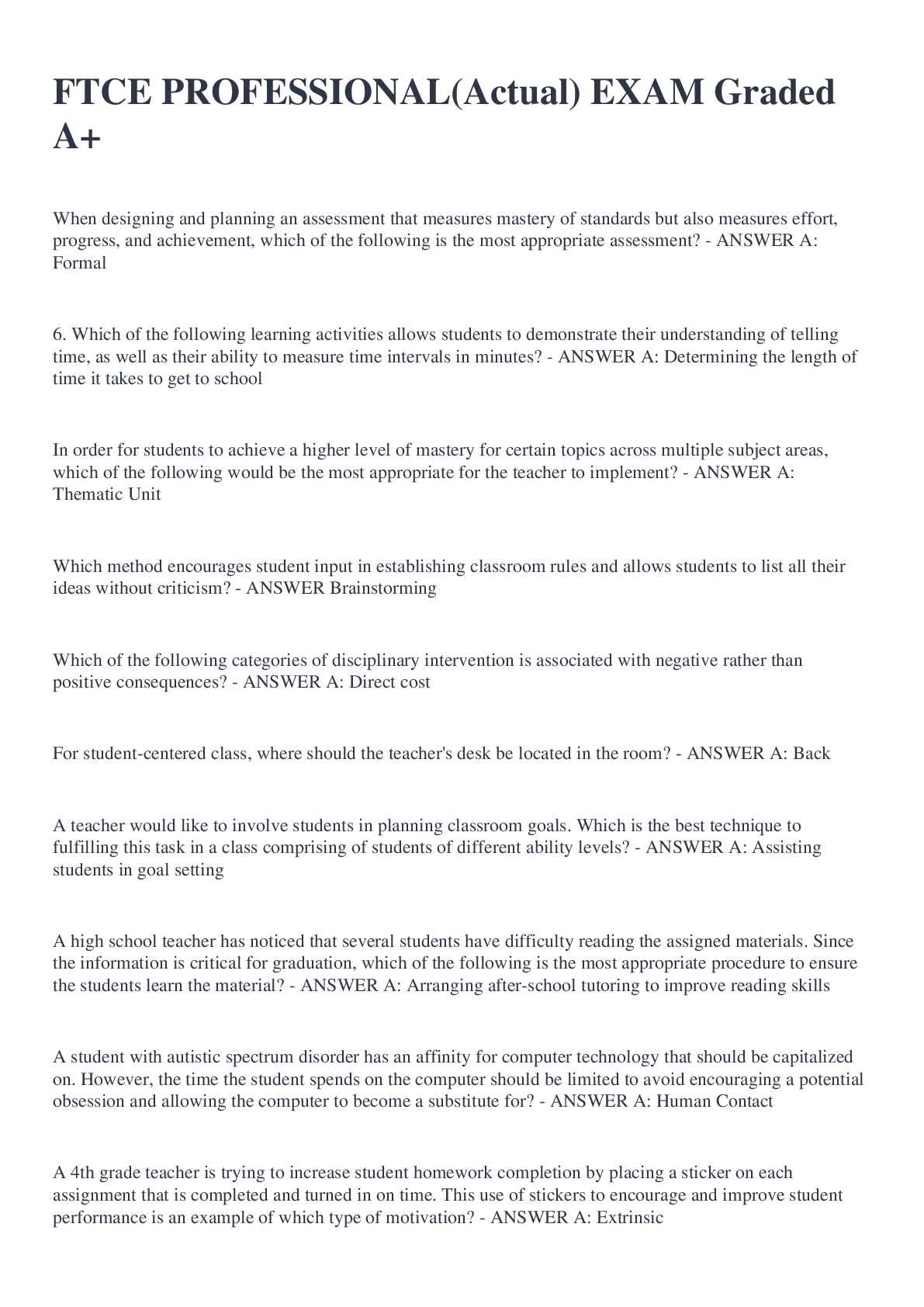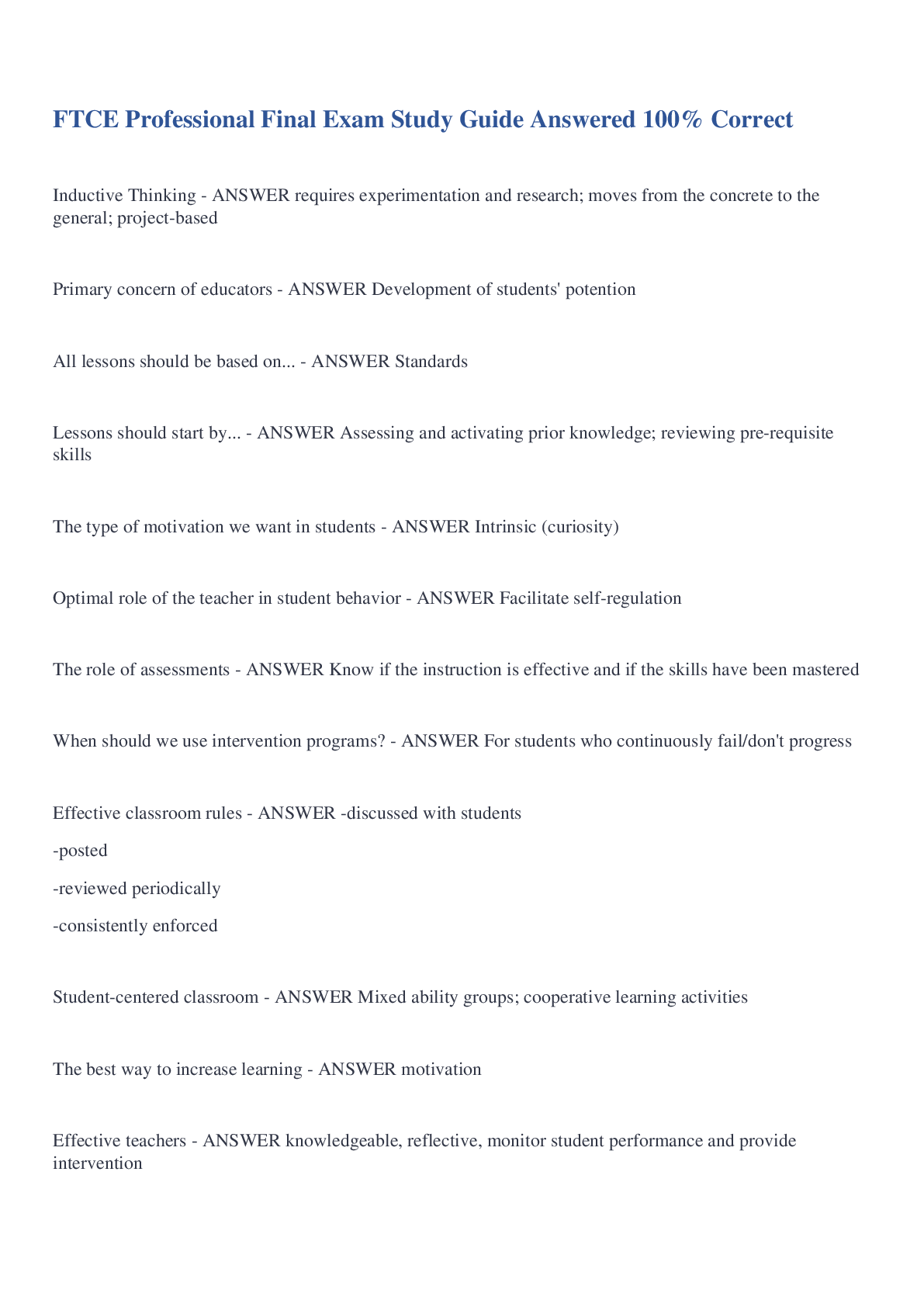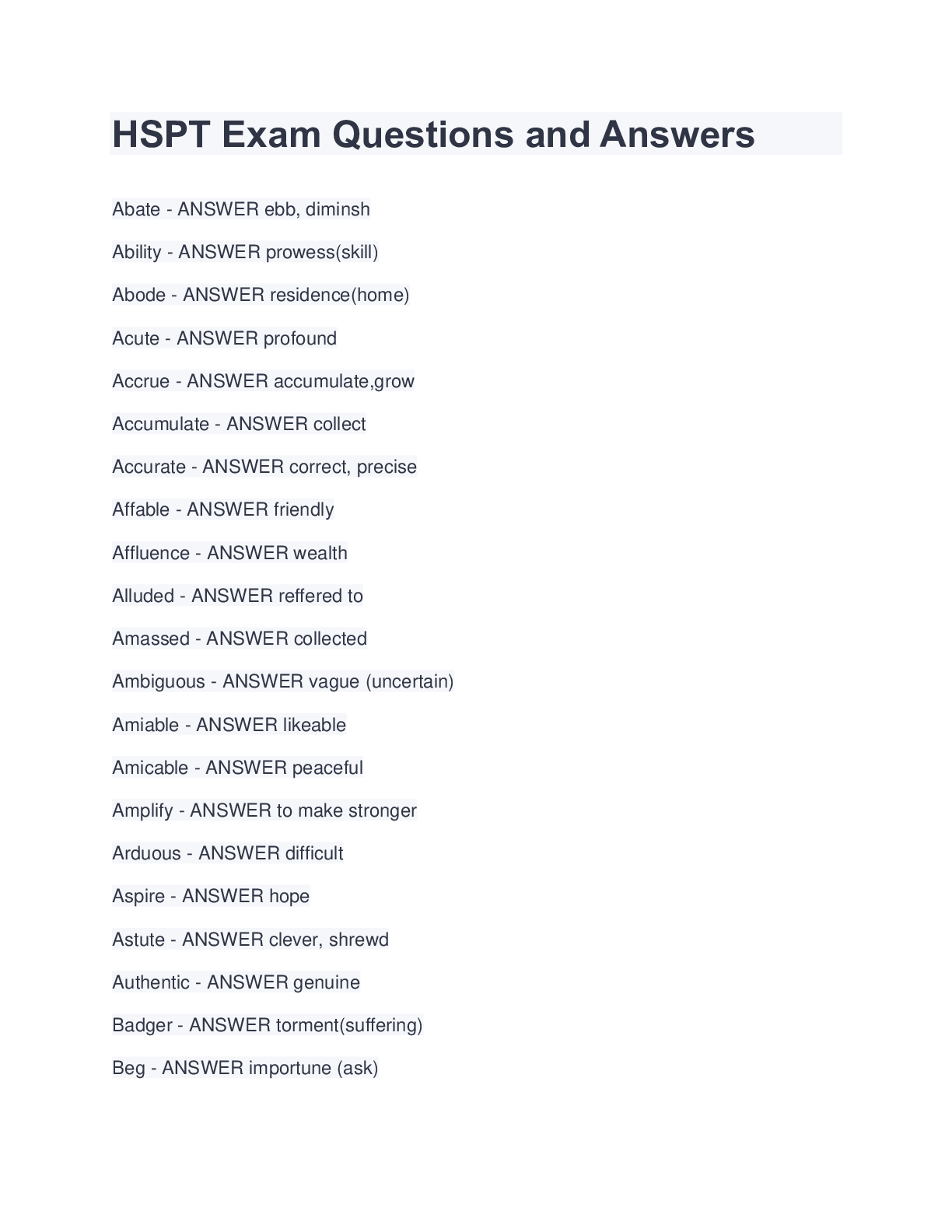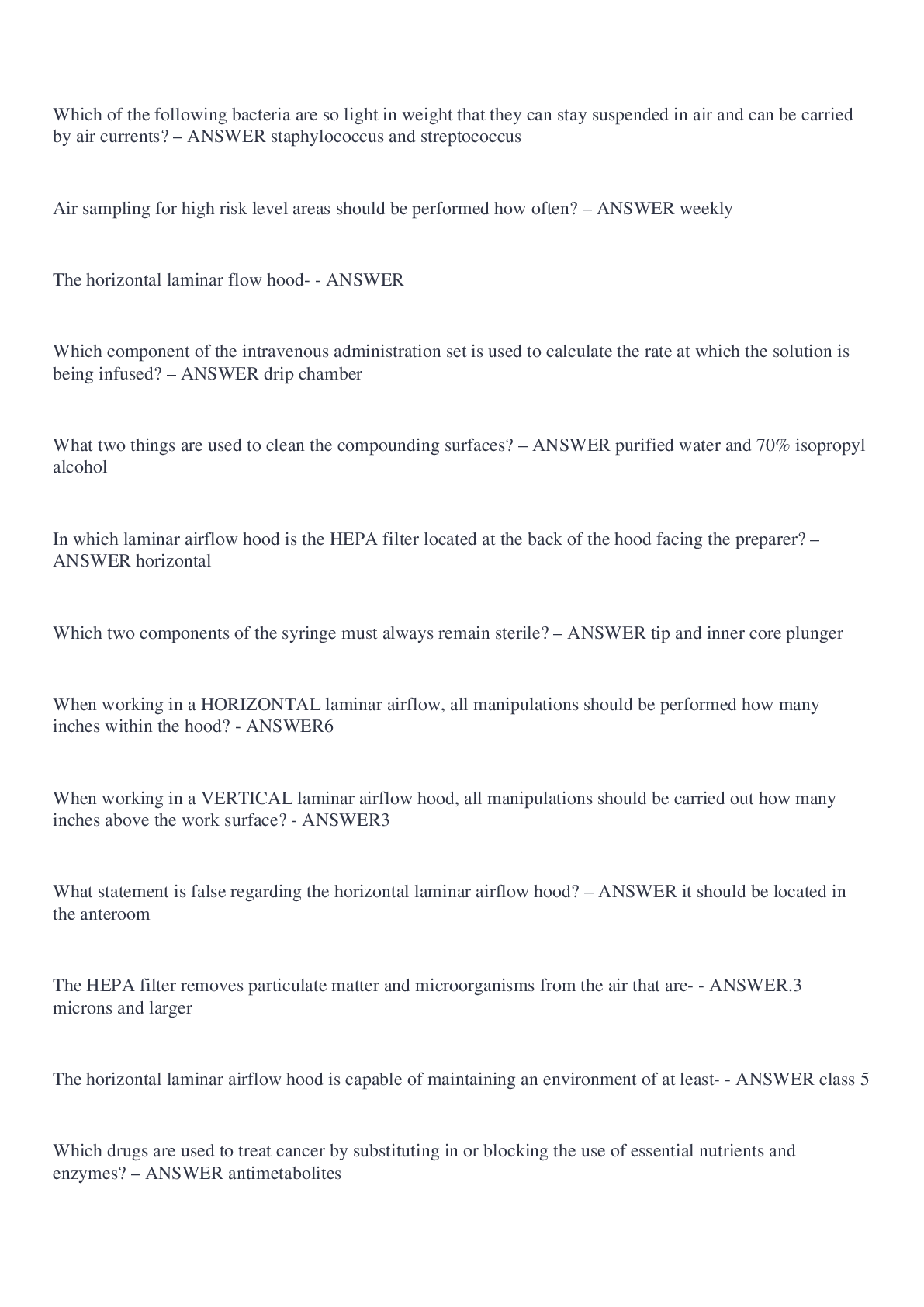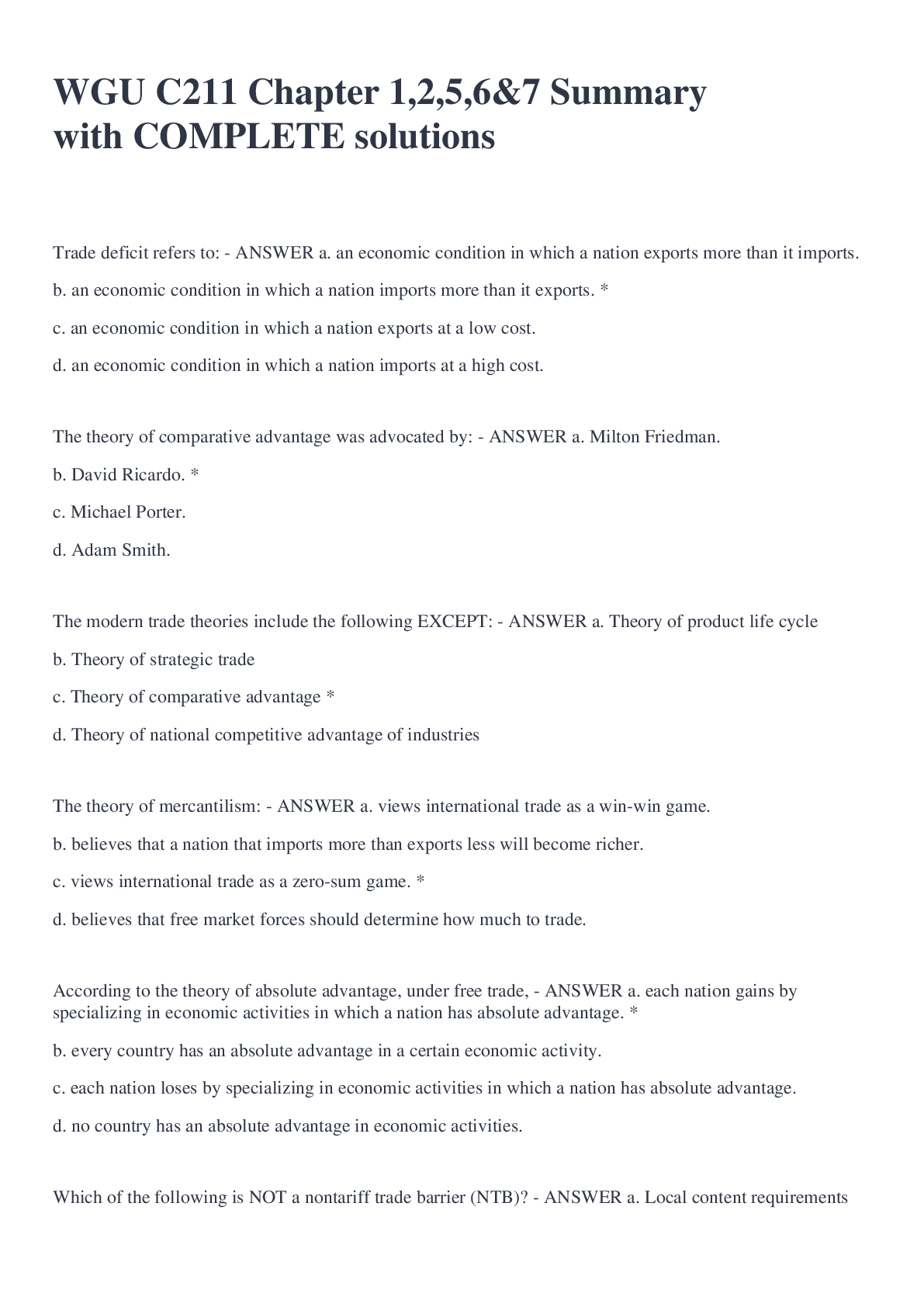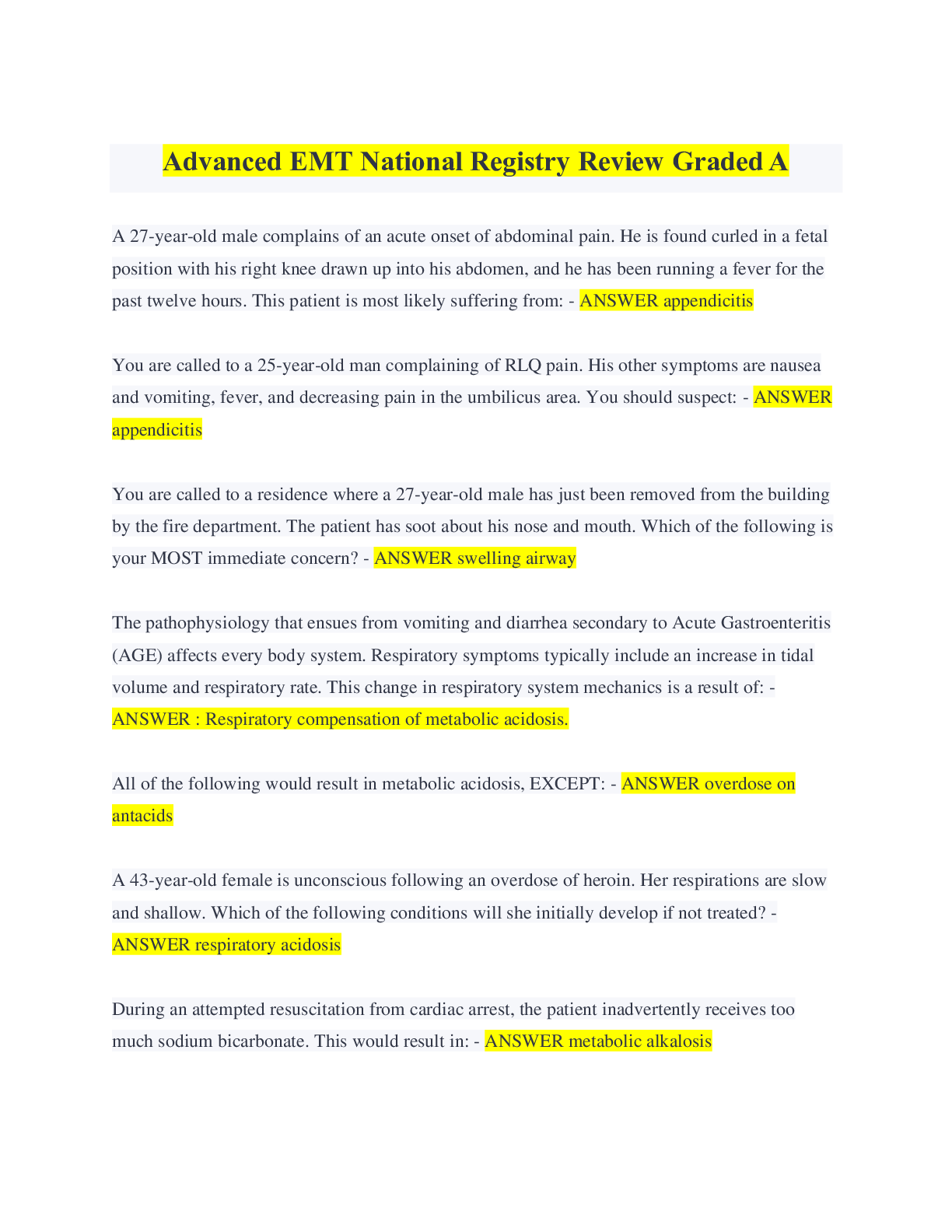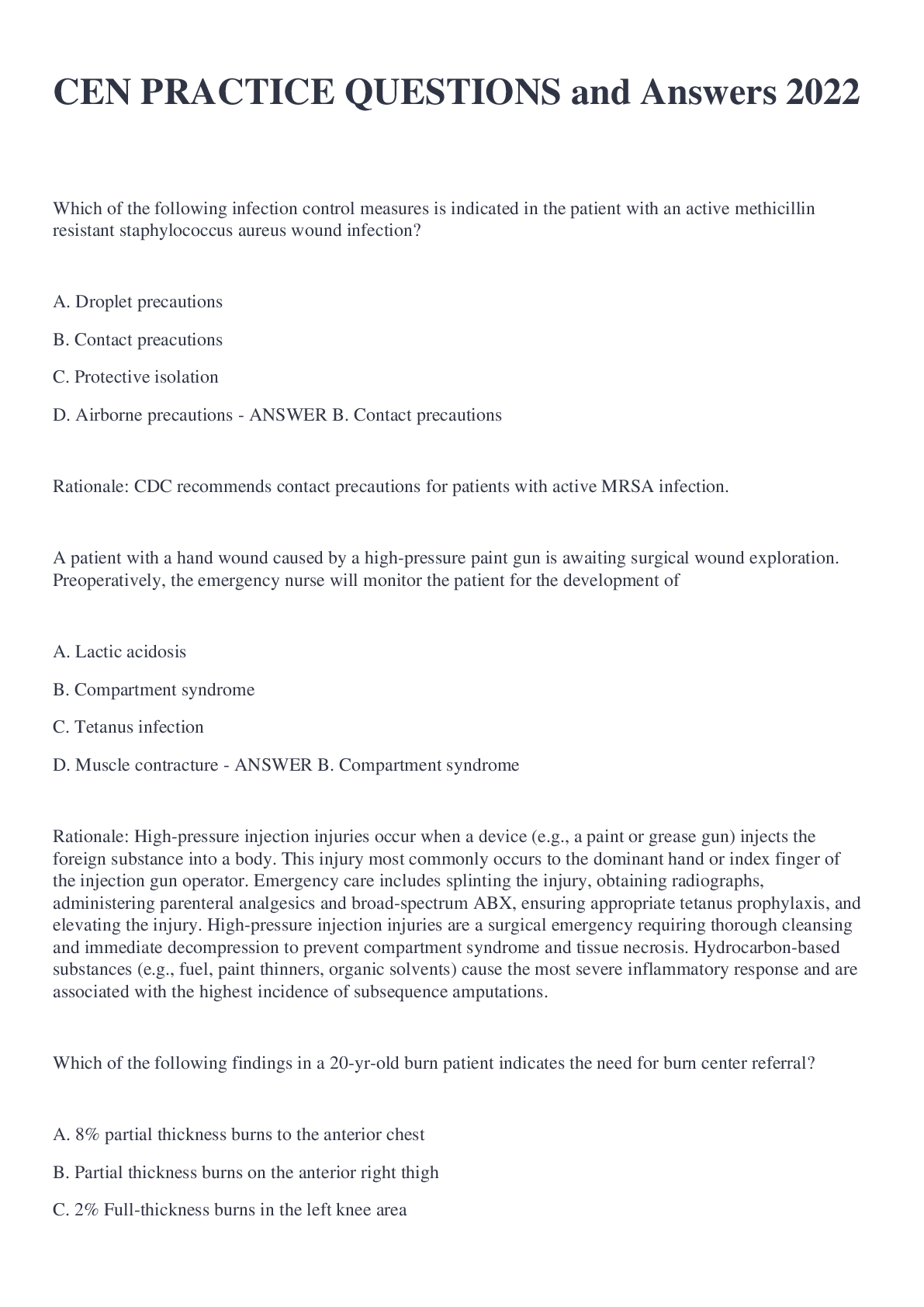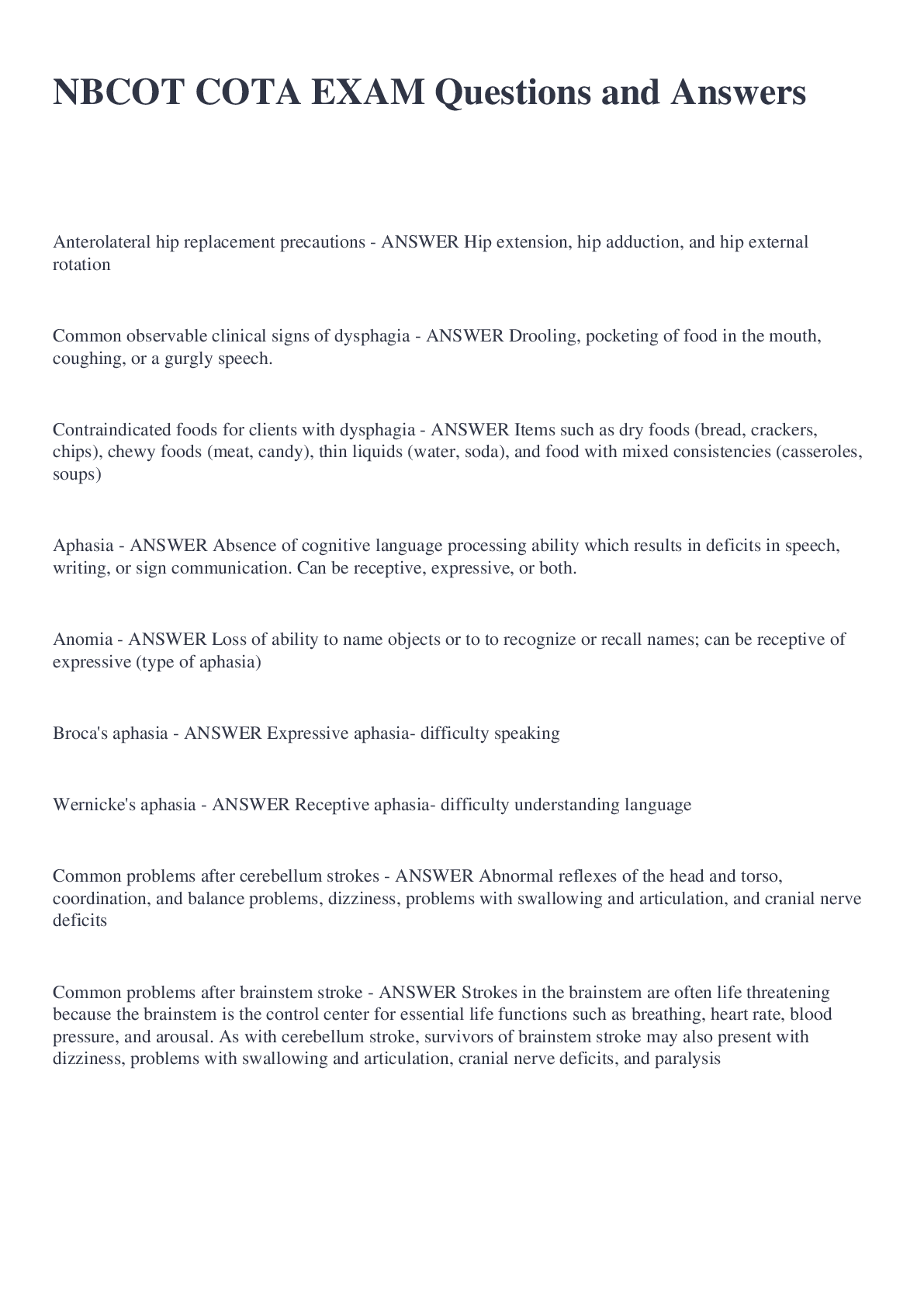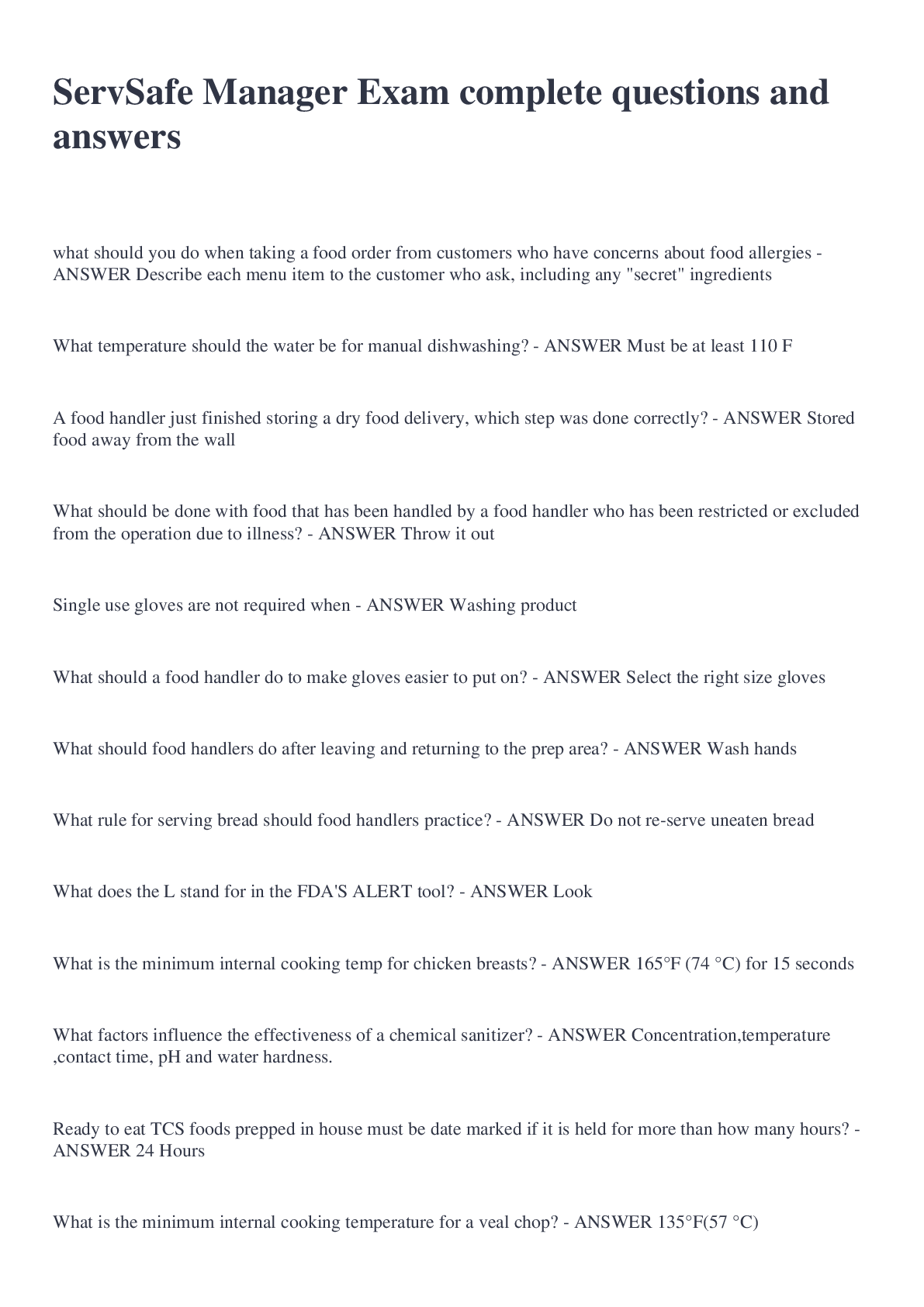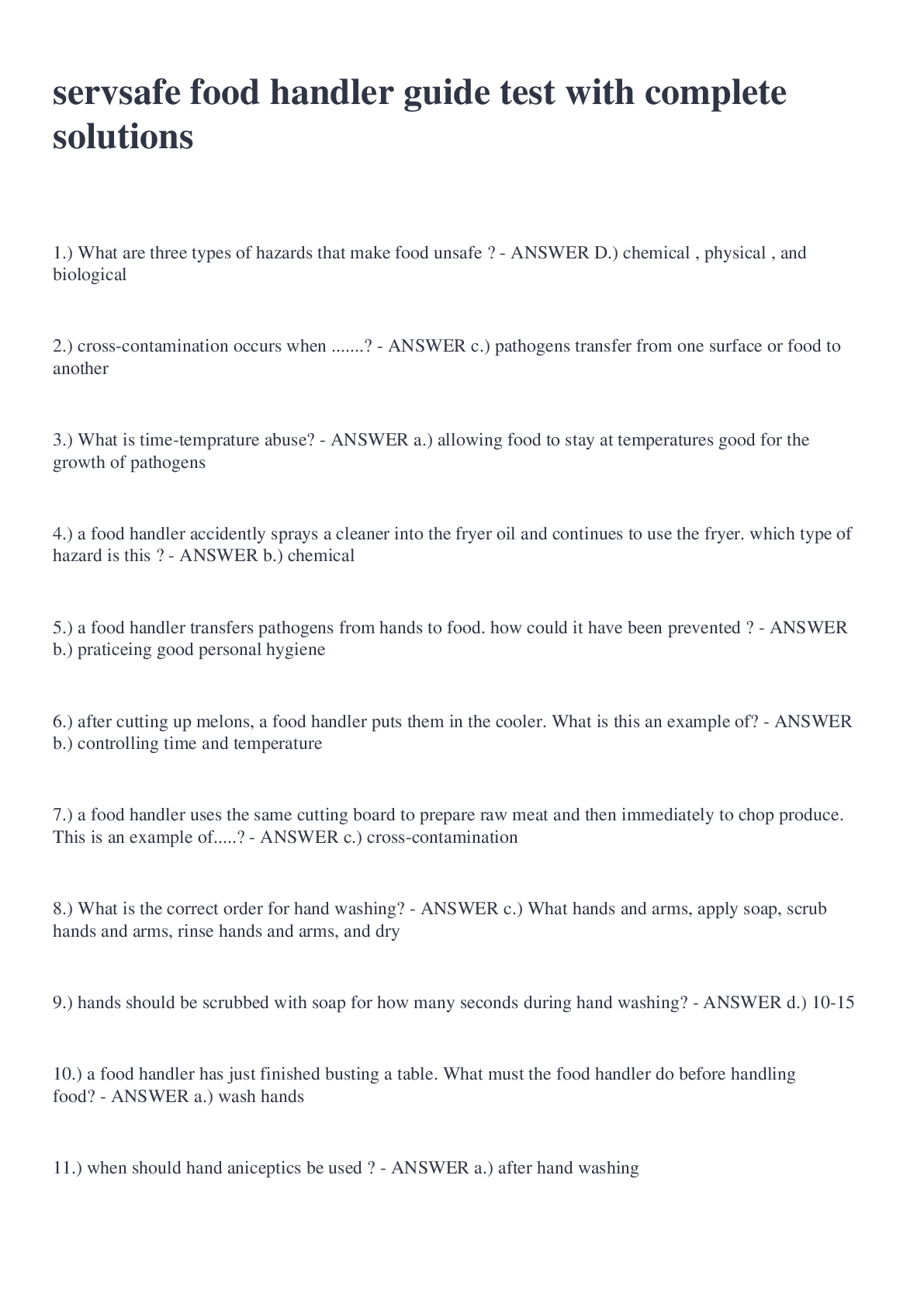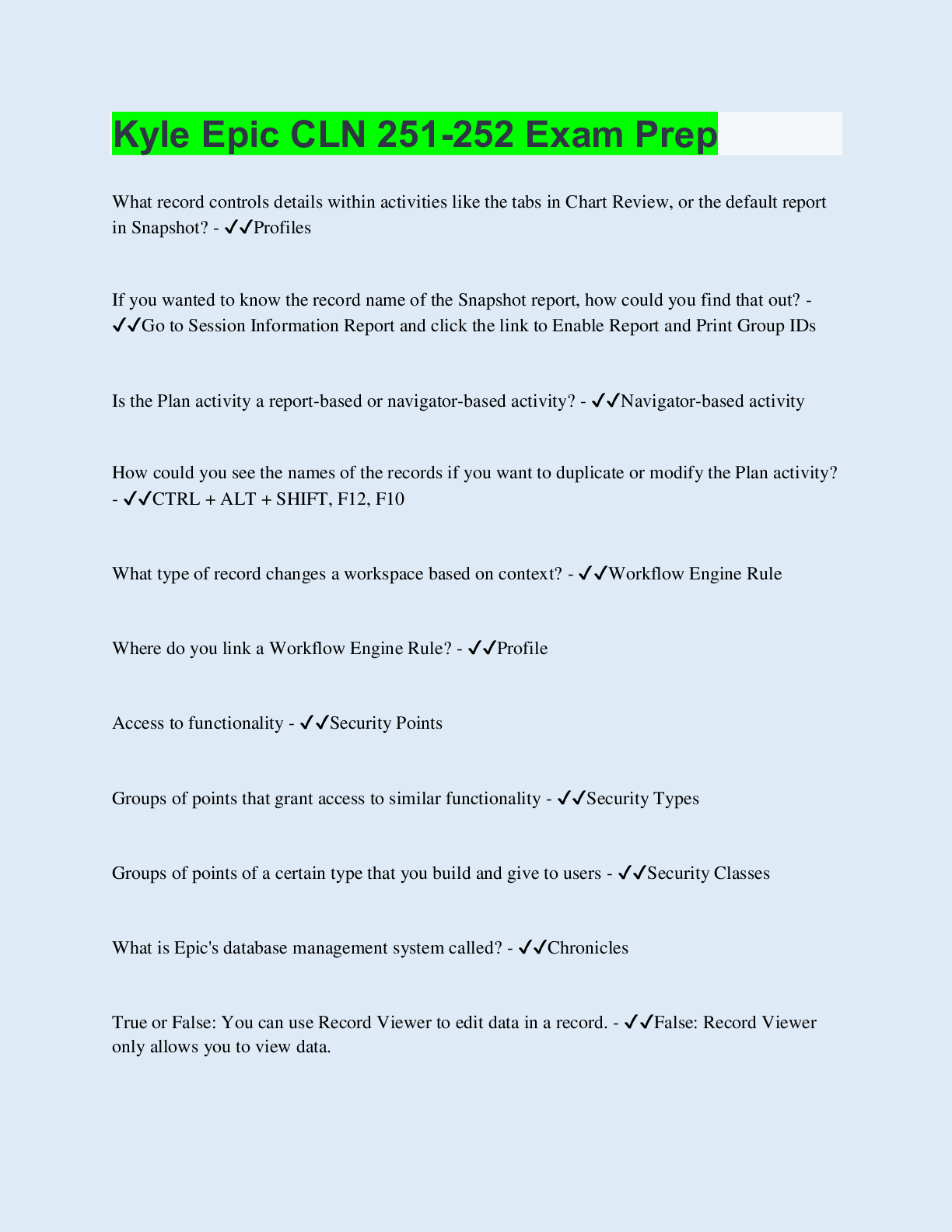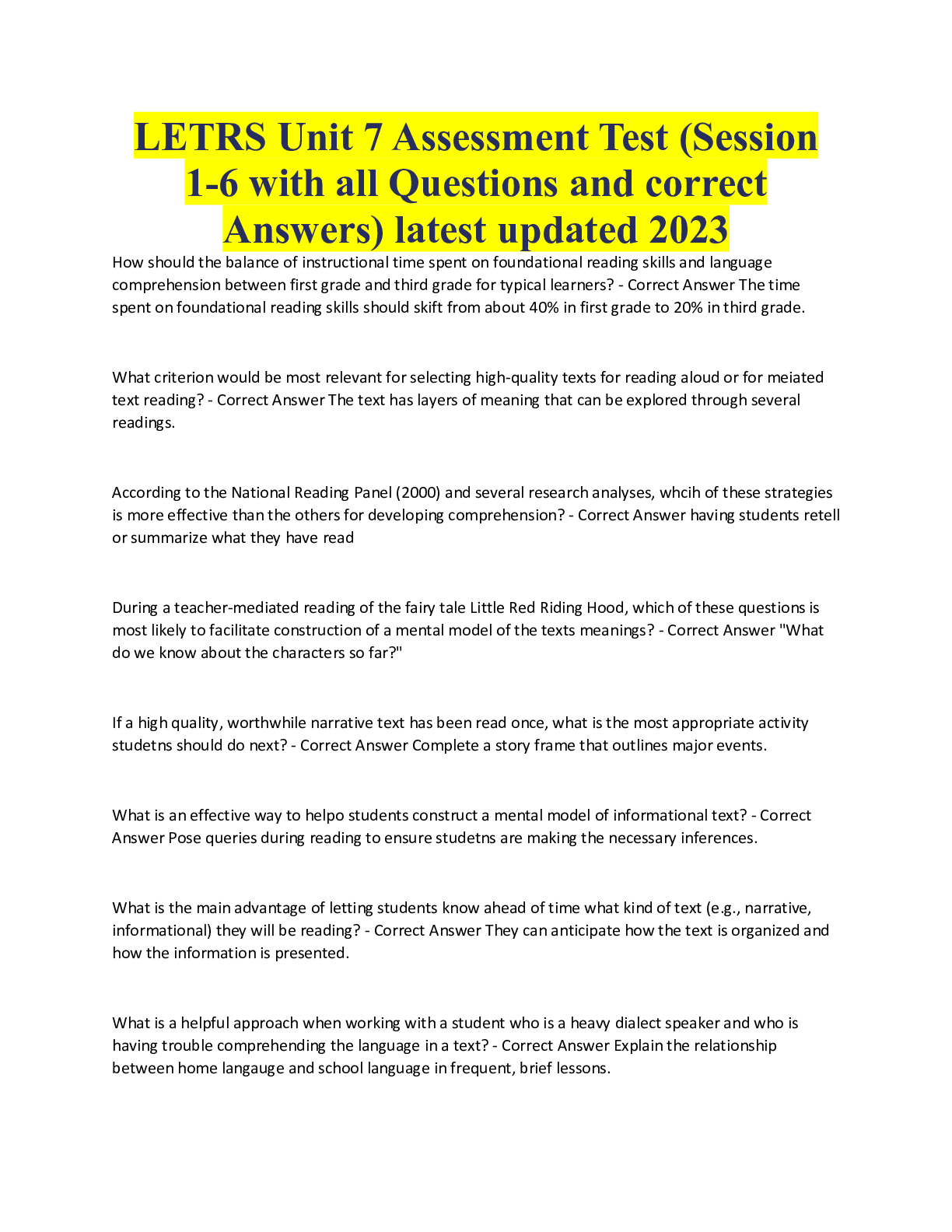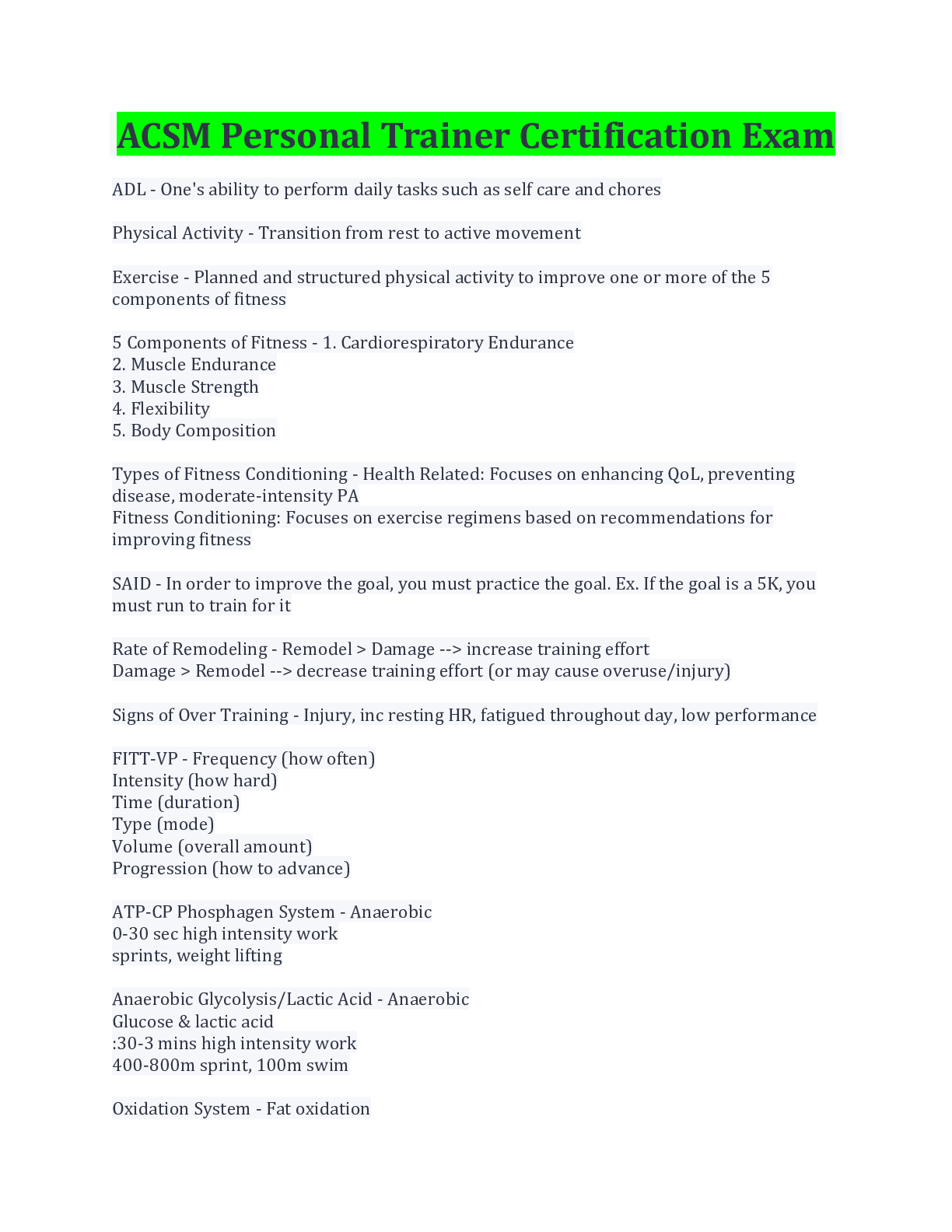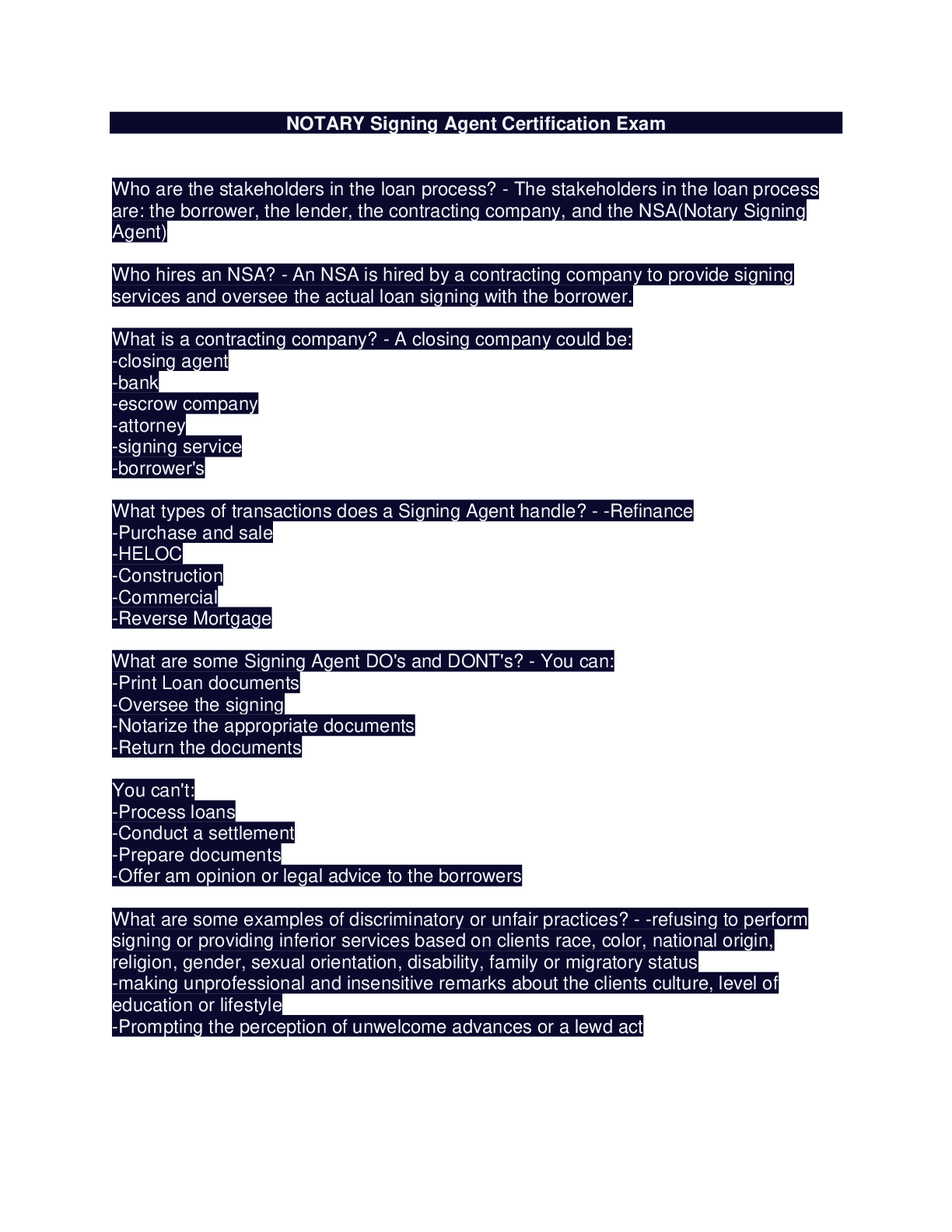2023 CSCS Certification Exam with complete solution
Document Content and Description Below
Hypothalamus - ANSWER control of the autonomic nervous system Parathyroid gland - ANSWER responsible for the regulation of the body's calcium levels Epinephrine - ANSWER regulation of heart rate... , blood pressure Testosterone - ANSWER regulates the growth of muscle mass, body hair, bone mass, and more Parasympathetic nervous system - ANSWER decreases HR, BP, and muscular activation when a person is getting ready to go to sleep and digesting food Anabolic hormone - ANSWER associated with regulation of growth and development IGF - ANSWER a hormone synthesized in the liver that aids in tissue growth and other functions Catabolic hormone - ANSWER associated with the breaking down of substances into the body Transition Period - ANSWER shifts the program toward more event specific movements Second transition Period - ANSWER taking a break from usual lifting cycles, skills and drills, and competition to actively recover through recreational activities that may not be related to their sport Linear Periodization - ANSWER steady progression towards higher intensities Power snatch, clean and jerk - ANSWER 2 lifts used in Olympic competition Primary muscles targeted: glutes, quadriceps, hamstrings, calves, latissimus dorsi, core, trapezius, and deltoids Romanian Deadlift - ANSWER Targets glutes and hamstring Clean grip: common grip Snatch grip: wider grip Military Press - ANSWER Assumption of Risk - ANSWER Voluntarily participating in an activity despite knowing there are risk involves Liability - ANSWER The responsibility of the strength coach to provide a safe training environment and to protect athletes from injury series elastic component - ANSWER passive elasticity derived from tendons when a tensed muscle is stretched muscle spindles - ANSWER propioceptive organs that are sensitive to the rate and magnitude of a stretch Anthropometry - ANSWER the scientific study of the measurements and proportions of the human body. The most accurate body mass or body weight measurement is performed with a certified blance scale Margaria-Kalamen Test - ANSWER Used to asses lower body power. The athlete sprints toward the stairs from a standing start 20 feet (6 m) from the base of the stairs and then up the staircase three steps at a time. Partial Curl-Up - ANSWER measures endurance of the abdominal muscles. Eliminates the use of hip flexor muscles. 75 reps is the maximum number of repetitions for this test Volume - ANSWER related to the total amount of weight lifted in a training session Ordering of exercise - ANSWER movements that require more skill or significant energy expenditure (such as power movements) are better placed at the beginning of a workout Tendons - ANSWER Connect muscle to bone negative caloric balance - ANSWER calories consumed fall below calories expended (weight loss) Increased requirements for athletes - ANSWER Protein requirements are increased by training Protein requirement for aerobic endurance athlete - ANSWER over 0.8 g/kg - 1.4 g/kg of body weight. Due to increase use of protein during exercise Monosacharides (simple sugars) - ANSWER Single sugar molecules. Glucose is the most common monosaccharide, the building block of many larger sugars. Glucose is the primary energy source for cells Glycogen - ANSWER An extensively branched glucose storage polysaccharide found in the liver and muscle of animals; the animal equivalent of starch. Stored more in skeletal muscle Glycogenesis - ANSWER converting glucose to glycogen. The liver has the highest glycogen content of all the tissues in the body Stability - ANSWER the measure of the ability to return to a desired position following a disturbance to the system Common caloric/protein intake - ANSWER 10%-15% Structural exercises - ANSWER Exercises that that involve multiple joints, should direct the force vectors through the spine and hip, and should apply loads heavier than single joint assistance exercises. Progressive overload - ANSWER placing greater than normal demands on the exercising musculature, applies to training to increase bone mass [Show More]
Last updated: 2 years ago
Preview 1 out of 8 pages

Buy this document to get the full access instantly
Instant Download Access after purchase
Buy NowInstant download
We Accept:

Reviews( 0 )
$7.00
Can't find what you want? Try our AI powered Search
Document information
Connected school, study & course
About the document
Uploaded On
Oct 04, 2022
Number of pages
8
Written in
Additional information
This document has been written for:
Uploaded
Oct 04, 2022
Downloads
0
Views
48

